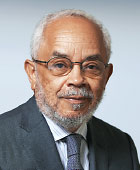On my recent visit to London’s Victoria and Albert Museum, there were waves of people moving back and forth, sure of where they were going. Art occupied every inch of space as far as I could see, the way some rich collectors decorate their salons, refusing to be bound by limitations of square footage. This meant the guide was obliged to offer me landmarks to show the zigs and zags I had to make. It was hard to separate discrete rooms from corridors. Everyone seemed delighted to be walled off from outside concerns and enveloped in an arena focused on aesthetics. I liked the feeling of being in a sanctuary with my imagination able to run loose unfettered by limits. No one was worried about missing a train or being late for a meeting. When I reached my destination, another member of the staff recommended I also visit a complementary exhibition called “Between Two Worlds.” She thought my needs would be met more effectively there, and she was right.
The focus of this collection was on Francis Williams, a Black Jamaican intellectual born in 1690, and Vanley Burke, also a Black Jamaican. He was born on the island in 1951 and moved to Britain as a young adolescent. The curator’s summary suggested that the portraits of the two men, created over 280 years apart, represented reflections on identity, racism, and colonial legacies. Both men are said to have pursued quests for personhood. Burke is well known in the U.K. as a photographer and artist. In this exposition, his pictures were on show, illustrating why he has been considered the godfather of Black British photography. His pictures were described as capturing Black presence in Britain, which is now a preoccupation of the art scene in the U.K.
I could see manifestations of this interest as I walked through the museum’s corridors and encountered the sculptures of Thomas J. Price. He presented figurative sculptures of Black people’s heads, everyday people: taking elements of individuals encountered in the streets of London to create fictional characters. The curator described these figures as psychological portraits intended to influence us to think about status and appearance. Price confronted this problem of who is a subject in European art. The concern is linked to notions of status, social value, and power. I continue to argue that these interconnections led to my reflections on inherent and attributed dignity. Earlier this summer, I noted this theme in an exposition by the American artist Faith Ringgold at the Picasso Museum in Paris. Artists like Price and Ringgold are now mindful of Black presence in the visualization of communities they represent artistically. Art can connect people to certain realities and persuade audiences to contemplate matters of worth and social value.
Given his age, Vanley Burke is a member of the Windrush generation, a group of immigrants from the Caribbean who answered the invitation to move to Britain after World War II and help the mother country get back on its feet. Many traveled to Britain between 1948 and the early 1970s, some of them on a ship named the Empire Windrush. Their treatment at the hands of the British government and its immigration policies provoked a scandal, as the offered welcome turned out to be less than honest. This shook to the core some immigrants’ hopes of truly belonging to British society. Consequently, documentation of Blacks’ contributions to the mother country over the last 75 years has been a major concern and has been responsible for the flowering of British photographic art and other genres of creativity and observation. Since 2018, June 22 has marked Windrush Day in Britain. The Windrush protest movement has created a special lens through which to view Britain’s attitude toward its colonies and its treatment of Blacks who decided to build a future in their new home. Burke’s photos bring to life Black Caribbean people in the new adopted spaces: working, studying, loving, hanging out, recreating home, worshipping, resisting, playing, getting a haircut, and debating. At the heart of it all is the quest for good health, prosperity, and self-respect.
I could not reach the end of Burke’s display without conjuring up my own journey from Barbados to New York in the mid-1950s. Had anyone followed me with a camera then, the pictures would have produced evidence of my adjusting to school, coping with loss of old friends and acquiring of new ones, learning how to use a bus and a subway, deciphering a new Americanized English, and memorizing the new diplomatic rules governing negotiations with other adolescents. I had to learn about Broadway (as in a Broadway play) and figure out why my new classmates could speak so casually to teachers. I did not even grasp why some of my peers wore three-piece suits to school. My first thought was to ask where the wedding was. There were also the obligations left over from the old country, like my having to visit my mother’s aunt, a woman whom I had just met. My mother had me fulfill a duty owed to her relative. That is what Caribbean mothers heaped on their children, following tradition. The aunt generously gave me a dollar or so to recompense my suffering. It was a game they all played.
The time did come when the immigrant in me relaxed in the new surroundings. Despite what we all say about the developed countries, it is often easier to get educated there than back home. And the experiences became more sophisticated. I knew it when I was introduced to the poet Langston Hughes, and I learned about the Harlem Renaissance. Talk about widening horizons for outsiders who get in! ■

